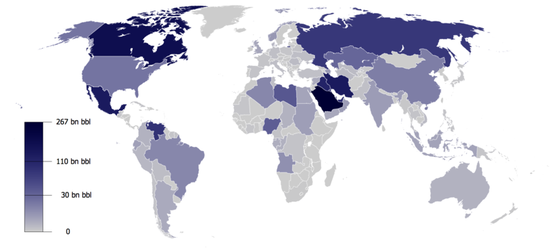London, September 16, 2024, (Oilandgaspress) –– The rapid decline in global oil demand growth in recent months, led by China, has fuelled a sharp sell-off in oil markets. Brent crude oil futures have plunged from a high of more than $82/bbl in early August to a near three-year low at just below $70/bbl on 11 September, despite hefty supply losses in Libya and continued crude oil inventory draws.
Global oil demand growth is slowing sharply from its post-pandemic rates, as already forecast in the OMR for some time. Reported monthly data covering 80% of global oil demand during the first half of 2024 confirm the steep decline in the rate of growth in oil consumption, which we have been projecting since our first forecast for 2024 was published in June 2023. Demand rose by 800 kb/d year-on-year over the first half of the year, dramatically lower than the growth of 2.3 mb/d recorded in 2023, but close to our initial forecast. For the year as a whole, global oil demand is on course to increase by 900 kb/d in 2024 and 950 kb/d next year.
The recent slowdown in China has seen its oil consumption declining y-o-y for a fourth consecutive month in July, by 280 kb/d. This stands in marked contrast to the 1 mb/d average pace of growth over the preceding 12 months, or the post-Covid surge of 1.5 mb/d in 2023. The country’s oil demand is now set to expand by only 180 kb/d in 2024, as the broad-based economic slowdown and an accelerating substitution away from oil in favour of alternative fuels weigh on consumption. Surging EV sales are reducing road fuel demand while the development of a vast national high-speed rail network is restricting growth in domestic air travel. The implications of the fundamental shift in the Chinese economic outlook and rapid changes to its vehicle fleet and transport modes are discussed in detail in our recent reports Oil 2024 and World Energy Outlook 2023.

Outside of China, oil demand growth is tepid at best. Latest data for the United States show a sharp decline in gasoline deliveries in June, following unexpected strength in May. As such, gasoline use in the world’s largest oil consumer declined y-o-y in five out of the first six months of this year. Structural headwinds and anaemic economic growth mean that deliveries continue to contract in a number of advanced economies. This could leave advanced economies’ oil use this year nearly 2 mb/d below its pre-pandemic level. With the steam seemingly running out of Chinese oil demand growth, and only modest increases or declines in most other countries, current trends reinforce our expectation that global demand will plateau by the end of this decade.
In an apparent effort to halt the precipitous slide in oil prices, in early September Saudi Arabia and its OPEC+ allies announced that they would postpone by two months the start of their planned unwinding of extra voluntary production cuts. The delay gives the alliance some time to further evaluate demand prospects for next year, as well as the impact of Libyan outages and its plan to phase out additional curbs of 2.2 mb/d by the end of next year. But with non-OPEC+ supply rising faster than overall demand – barring a prolonged stand-off in Libya – OPEC+ may be staring at a substantial surplus, even if its extra curbs were to remain in place. In the context of a rapidly evolving market, reliable energy data and unbiased market analysis will become more important than ever.

OPEC+ crude oil production1
million barrels per day
| Jul 2024 Supply |
Aug 2024 Supply |
Aug Prod vs Target |
Aug-2024 Implied Target1 |
Sustainable Capacity2 |
Eff Spare Cap vs Aug3 |
|
|---|---|---|---|---|---|---|
| Algeria | 0.92 | 0.91 | 0.0 | 0.91 | 0.99 | 0.08 |
| Congo | 0.26 | 0.27 | -0.01 | 0.28 | 0.27 | -0.0 |
| Equatorial Guinea | 0.06 | 0.07 | 0 | 0.07 | 0.06 | -0.01 |
| Gabon | 0.22 | 0.23 | 0.06 | 0.17 | 0.22 | -0.01 |
| Iraq | 4.38 | 4.38 | 0.47 | 3.91 | 4.87 | 0.49 |
| Kuwait | 2.52 | 2.52 | 0.11 | 2.41 | 2.88 | 0.36 |
| Nigeria | 1.31 | 1.36 | -0.14 | 1.5 | 1.42 | 0.06 |
| Saudi Arabia | 9.01 | 9.01 | 0.03 | 8.98 | 12.11 | 3.1 |
| UAE | 3.3 | 3.3 | 0.39 | 2.91 | 4.28 | 0.98 |
| Total OPEC-94 | 21.98 | 22.05 | 0.92 | 21.13 | 27.1 | 5.06 |
| Iran5 | 3.38 | 3.42 | 3.8 | |||
| Libya5 | 1.16 | 0.98 | 1.23 | 0.25 | ||
| Venezuela5 | 0.92 | 0.92 | 0.87 | -0.05 | ||
| Total OPEC | 27.44 | 27.37 | 33.0 | 5.31 | ||
| Azerbaijan | 0.48 | 0.48 | -0.07 | 0.55 | 0.49 | 0.01 |
| Kazakhstan | 1.6 | 1.45 | 0.03 | 1.42 | 1.62 | 0.17 |
| Mexico6 | 1.57 | 1.58 | 1.6 | 0.02 | ||
| Oman | 0.76 | 0.76 | 0.0 | 0.76 | 0.85 | 0.09 |
| Russia | 9.19 | 9.11 | 0.13 | 8.98 | 9.76 | |
| Others 7 | 0.69 | 0.72 | -0.15 | 0.87 | 0.86 | 0.14 |
| Total Non-OPEC | 14.29 | 14.09 | -0.06 | 12.58 | 15.17 | 0.43 |
| OPEC+ 18 in Nov 2022 deal5 | 34.7 | 34.56 | 0.85 | 33.71 | 40.67 | 5.47 |
| Total OPEC+ | 41.73 | 41.46 | 48.17 | 5.74 |
1. Includes extra voluntary curbs where announced. 2. Capacity levels can be reached within 90 days and sustained for an extended period. 3. Excludes shut in Iranian, Russian crude. 4. Angola left OPEC effective 1 Jan 2024. 5. Iran, Libya, Venezuela exempt from cuts. 6. Mexico excluded from OPEC+ compliance. 7. Bahrain, Brunei, Malaysia, Sudan and South Sudan.
Information Source: Read More
Oil and gas press covers, Energy Monitor, Climate, Renewable, Wind, Biomass, Sustainability, Oil Price, LPG, Solar, Marine, Aviation, Fuel, Hydrogen, Electric ,EV, Gas,


